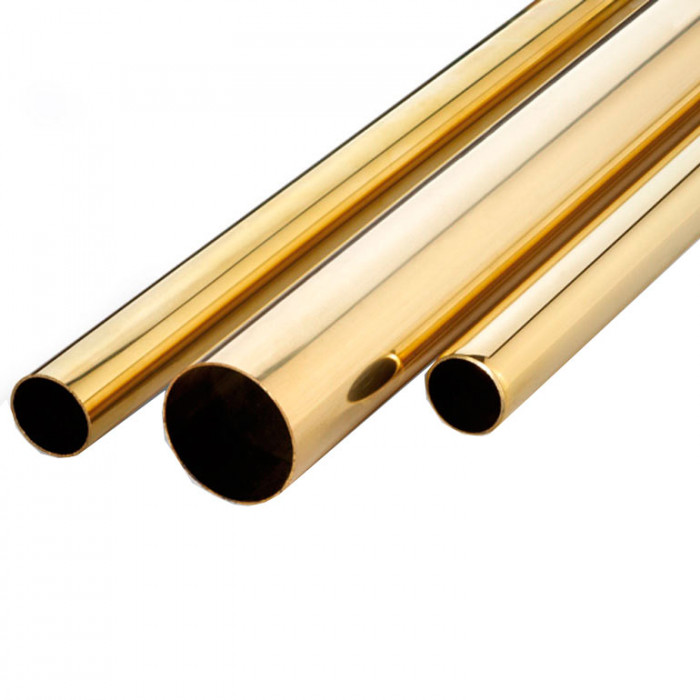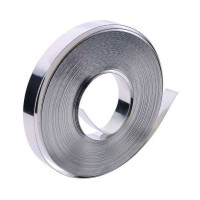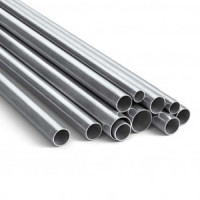Zviahel (Novograd-Volynsky) brass pipe L63, brass tube LS59-1, brass bushing, casting, brass tape BrOF, brass ingot
Brass pipe according to GOST 494 90 is made of copper and zinc alloys. Alloying of copper is carried out by introducing other components - aluminum, nickel, iron, lead, tin, etc. Complex alloys have special properties that allow the material to be used for special purposes. Brass in a different phase state is involved in the technological process for the production of pipes. Depending on it, alloys are divided into wrought and cast.
Brass pipes are produced using a special alloy, which includes copper, as the base of the alloy, and zinc (alloying element). Sometimes tin or other metals are added to the alloy to improve its quality characteristics. The more the composition contains zinc, the more yellow its color. The brass pipe is widely used throughout the world in various industries from heating systems in residential buildings to energy and shipbuilding.
Brass pipes have high strength characteristics and can be used for a variety of purposes in industry and everyday life.
Features of brass products
The manufacture of brass products is carried out by the method of cold deformation and pressing of the material. Zinc in the alloy plays a very important role, increasing the strength indicators. The more zinc is contained in the alloy, the higher the number that determines the characteristics and type of product. Another important indicator is plasticity. The grade L68 has the optimal plasticity parameters.
When buying a brass part, you should focus on the parameters that are indicated by the GOST of the product. According to this document, cold-rolled and drawn tubular products are represented by three types: hard, semi-hard and soft (this applies to both thick-walled and thin-walled products). Semi-hard brass parts are subject to additional processing, which eliminates the tensile stresses of the inner walls.
According to the standards, the surface of the pipe must be smooth and free from visual defects.
The rules that are set out in GOST also have requirements for the surface of parts. Brass products must be produced in accordance with all technical standards and must not have dents, cracks, shells or burrs on their surface. Small defects are allowed, which can be easily eliminated by cleaning the surface of the product.
Not only round pipes are made from such an alloy, but also other shapes: rectangular, polyhedral or square brass pipes. Profile products are widely used in construction, production of furniture fittings. In addition, such details can serve as elements of the decor of the room.
Positive qualities of brass pipes
Brass products, as a rule, have excellent characteristics and quality indicators. Therefore, the cost of a brass product often exceeds its counterparts from ferrous metals.
The main advantages of parts from this alloy include:
high strength and endurance;
resistance to mechanical loads;
excellent anti-corrosion performance. Brass pipes are practically not exposed to the destructive effect of corrosion;
resistance to sudden temperature changes;
antifriction properties (have a low coefficient of friction);
ease of installation, handling and replacement;
long service life (up to 50 years).
Brass is a ductile material, and its processing does not cause difficulties.
Types of brass pipes
For the manufacture of brass products, as a rule, alloys are used that have a diverse composition and different ratios of alloying elements. This is done in order to produce pipes with different technical characteristics for different needs. The addition of dopants occurs at different stages of production. The class of finished products can be foundry or plastic (deformable). Subclasses may also be produced for further processing and production of new types of product.
As mentioned above, pipes are divided into thick-walled and thin-walled. Let's look at these two types in more detail.
Thick-walled pipes. Such a product, due to its quality characteristics, can be used in various industries for laying pipelines at large enterprises. These pipes are produced without connecting seams and are used in the transportation of gases and liquids with high pressure. They are not used for domestic pipelines, because it does not make sense, because they are designed for large loads, which simply do not happen in everyday life.
Pipe brass cold-rolled thin-walled. This type of pipes has found application in the housing and household sector. They have more modest characteristics than thick-walled ones. As a rule, they are used for the installation of pipelines in residential premises, as well as for boiler systems. Such parts are made using cold rolling and pressing. They are widely used due to their excellent anti-corrosion and strength properties.
Thin-walled pipe is used inand installation of domestic water supply and heating systems
There is a pipe that has unique quality characteristics - profile. Tubes brass profile have various types of section. It can be square, rectangular or oval. These pipes have a high density and excellent elasticity, which makes them indispensable in various fields (especially in construction).
Brass piping
Brass pipes can be used as part of plumbing systems, both residential and industrial. However, this is a rather rare occurrence. Now, when it is possible to buy cheap plastic or metal-plastic pipes, it simply does not make sense to install brass ones at home. But they are also used for this purpose, albeit not as often as their competitors. They are recommended to be used as an alternative to bulky, heavy pipes made of other metals.
Unlike pipes, brass fittings are very widespread. Their popularity is due to the fact that they are light in weight, have a huge number of varieties for any purpose and type of pipe, and, in addition, are relatively cheap. The ease of installation of these connecting elements also plays an important role (they can be installed without special tools).
Brass pipes are distinguished by excellent quality and durability. These products have anti-corrosion properties, which are so important, especially when installing metal pipelines. When choosing these parts, it is necessary to study their types and characteristics, because these products have a number of features and "contraindications" for use. But you can always consult with experts who will help you choose the right product.
Specifications for the production of brass pipes are announced in GOST 21646-2003. In particular, GOST 2003 prohibits the presence of dents and burrs on the surface of the product. If any defect can be eliminated by a slight impact on the outer shell, then it is considered acceptable.
Under production conditions, pipes of various diameters, gears and other important products are made from brass. From it you can make objects with a complex geometric shape. This is due to the fact that the material is malleable to processing.
Depending on the production task, brass is processed:
pressure;
casting;
sharp;
stretching;
soldering;
stamping.
Part of the technological process is rolling.
The pliability of brass for processing is so great that it is not always heated under production conditions: it is possible to work with metal even in a cold form.
There are three methods for manufacturing brass pipes:
pressing - hot method;
deformation - cold method.
horizontal casting.
Finished products are divided into thin-walled and thick-walled.
The most practical are thick-walled pipes. They do not have a welded seam, therefore they are designed for operation in particularly difficult conditions. Thick-walled products are used in the industrial sector.
Thin-walled brass products are made by pressing or by rolling without the use of heat. Brass pipes are made of zinc and copper. They are easy to machine - they are cut, polished and welded. They are divided into thick-walled and thin-walled. When working with this product, you should follow safety precautions. Protect your hands with special gloves and your eyes with safety glasses. Buy pipes only from trusted manufacturers who have a license to sell such goods to avoid buying fakes. Holes, chips and cracks in them are not allowed during production. They are pulled together in several pieces for storage and further transportation. Pipes are highly durable and long-lasting, products made from it will serve you for many years. They are resistant to high humidity and high temperatures. They are used to build boiler heating systems. Pipes can be profiled and have a cross-section in the form of a square, oval or rectangle. They are used as a decorative element in cafes and bars, since polished pipes have an excellent aesthetic appearance. Sometimes, individual custom-made furniture elements, such as legs and frames for tables and bar stools, are made from small-diameter profile pipes.
No questions about this product, be the first and ask your question.



